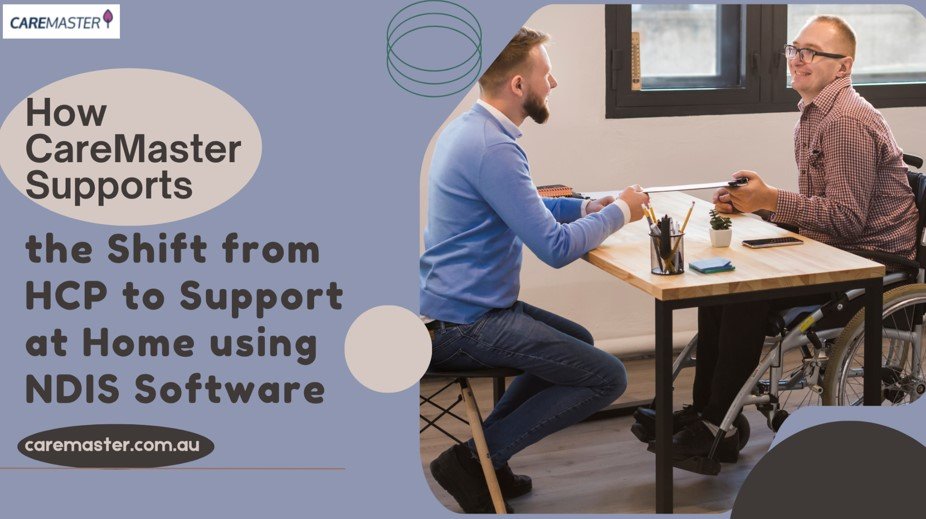
How CareMaster Supports the Shift from HCP to Support at Home using NDIS Software
Aged care in Australia is at a turning point. Over the past year, headlines have centred on new legislation, workforce reforms, and a stronger call for person-centred care. Many provider organisations are preparing for the Support at Home rollout, a change that asks teams to rethink how they manage every part of service delivery.
This change, however, means greater responsibility for compliance, transparent funding, and stronger data reporting. Paper-based systems, scattered spreadsheets, and email threads now struggle to keep up with the pace and detail that regulators and clients expect.
For many providers, modern, practical solutions help create a sustainable way to deliver care in an environment that keeps evolving. That’s why modern NDIS software for providersis becoming a foundation for the sector’s next chapter, making it possible to manage complexity and support clients with confidence as the landscape changes.
What’s driving the move from HCP to Support at Home?
The push for reform began with the Royal Commission into Aged Care Quality and Safety, whose findings set the agenda for more transparent and person-centred care. This has led to the Aged Care Act 2024, now in effect from November 2025.
Provider organisations are now required to deliver flexible, transparent, and closely tracked care across all areas, from rostering to billing to compliance reporting. With award wage changes, set pricing models, and stricter reporting frameworks all coming in, managing resources, updating systems, and staying compliant has never been more important.
This is why many teams now see robust NDIS software for providersas essential, not optional, to prepare for Support at Home.
What are the biggest challenges for providers in this new model?
The transition brings genuine improvements for those receiving care, but it also ramps up the pressure on provider organisations. Some of the most common challenges include:
- Adapting: To new set pricing and funding categories, including assistive technology and home modifications.
- Handling regular payroll updates: Including changes to workforce awards.
- Navigating the shift from quarterly budgets and unspent funds: To new, multi-stream funding models.
- Managing a broader list of eligible services: Each with its own reporting requirements and codes.
- Keeping records audit-ready for both CHSP and DEX reporting: While ensuring client data is secure and up-to-date.
Many providers have questions about how these changes affect billing, claiming, care management, and reporting. It’s a lot more than moving clients to a new system; it’s making sure every aspect of funding and service delivery is configured correctly and nothing slips through the cracks.
How does aged care software support this transition?
Modern Aged Care Software does more than just tick off admin boxes. It provides:
- Automated rostering, skills-based allocation, and real-time updates.
- Seamless DEX API integration for activity uploads and compliance.
- Easy setup for new funding categories and participant contribution tracking.
- Built-in tools for generating compliant monthly client statements.
- Flexible service categorisation and support for daily, hourly, or set-rate services.
- Secure document management and visibility for care plans and agreements.
CareMaster has been updating its system requirements to ensure provider organisations can smoothly adopt these changes. From creating supports that align with new funding categories to managing all service line items, CareMaster offers ready-made solutions that are continuously updated as more details come from Services Australia.
This approach means providers are never left scrambling and stressed at the last minute; the groundwork is already in place, and as each official guideline lands, updates flow straight into the aged care and NDIS software for providers.
How does CareMaster bring aged care and NDIS software together for Support at Home?
One of CareMaster’s core strengths is its ability to unify aged care software and NDIS software in a single platform. This is especially helpful for providers working across aged care, Support at Home, and NDIS, or managing clients who shift between programs.
CareMaster’s platform supports:
- Seamless migration: Of existing HCP participants to the new Support at Home model, with all supplements and funding tracked automatically.
- Custom service codes, line items, and reporting features: All ready to be updated as new government information is released.
- Automated creation and management of new funding buckets: such as assistive technology, home modifications, and unspent balances, so nothing is missed when tracking and claiming.
- Clear, configurable templates for monthly statements and service agreements: So providers can focus on care, not paperwork.
- When questions arise (like changes to care management billing or new service codes), CareMaster provides training resources, regular webinars, and up-to-date FAQs in the Help Centre, ensuring organisations can stay confident, informed, and ready for what’s next.
Want practical guidance on the Support at Home rollout?
Watch our latest Support at Home transition webinar for a walkthrough of the new features, system updates, and answers to the most common provider questions. The recording and FAQ document are both available now.
What does a day look like for a provider using aged care software?
Consider the typical admin day during this sector transition:
| Daily Task | Without Aged Care Software | With Aged Care Software |
| Rostering | Manual, error-prone | Automated, real-time |
| Compliance Reporting | Time-consuming, repetitive | Streamlined, audit-ready |
| Payroll/Invoices | Stressful, risk of late payment | Automated, compliant |
| Client Communication | Fragmented, missed messages | Central, secure, multi-channel |
Instead of hunting for information or second-guessing which funding code to use, teams have every tool in one place. Regular system updates mean providers can respond to changes from Services Australia, migrate clients, and update pricing without the stress or confusion that comes from managing multiple spreadsheets or systems.
How does this shift benefit provider organisations and their teams?
For providers, the operational improvements ripple across the entire workforce:
- Support workers: Gain instant access to rosters, updates, and resource documents so there’s less confusion, better use of their time, and improved service delivery.
- Admin and management teams: Spend less time double-handling data, reduce errors, and have reliable, up-to-date data for audits and compliance checks.
- Finance and billing teams: Have preconfigured templates and automatic reconciliation for even the most complex funding models, helping them keep up as government guidance evolves.
The end result? Providers can focus more on quality service, confident that their compliance and admin needs are under control.
What should providers look for when choosing aged care and NDIS software?
With so much changing, providers need to look for:
- Continuous system updates and responsive support as new regulations land.
- Integrated compliance tools for both aged care and NDIS.
- Flexible configuration for funding, pricing, and reporting.
- Local support, onboarding, and regular training updates.
- Secure document management for agreements, care plans, and statements.
- User-friendly dashboards for all roles, from admin to support workers.
CareMaster delivers on each of these points. Anticipating sector changes and giving providers a single source of truth makes it easier to meet every requirement with less stress and more confidence. Also, our NDIS Rostering Software delivers smart scheduling and helps minimise errors. It also keeps your workforce agile, no matter how your client mix evolves.
Summing Up
The move from HCP to Support at Home is a period of big change but also a chance for provider organisations to future-proof their operations. With the right aged care software and NDIS software, teams are equipped to handle every update, every funding change, and every compliance check, while still delivering genuine, person-centred care every day.




